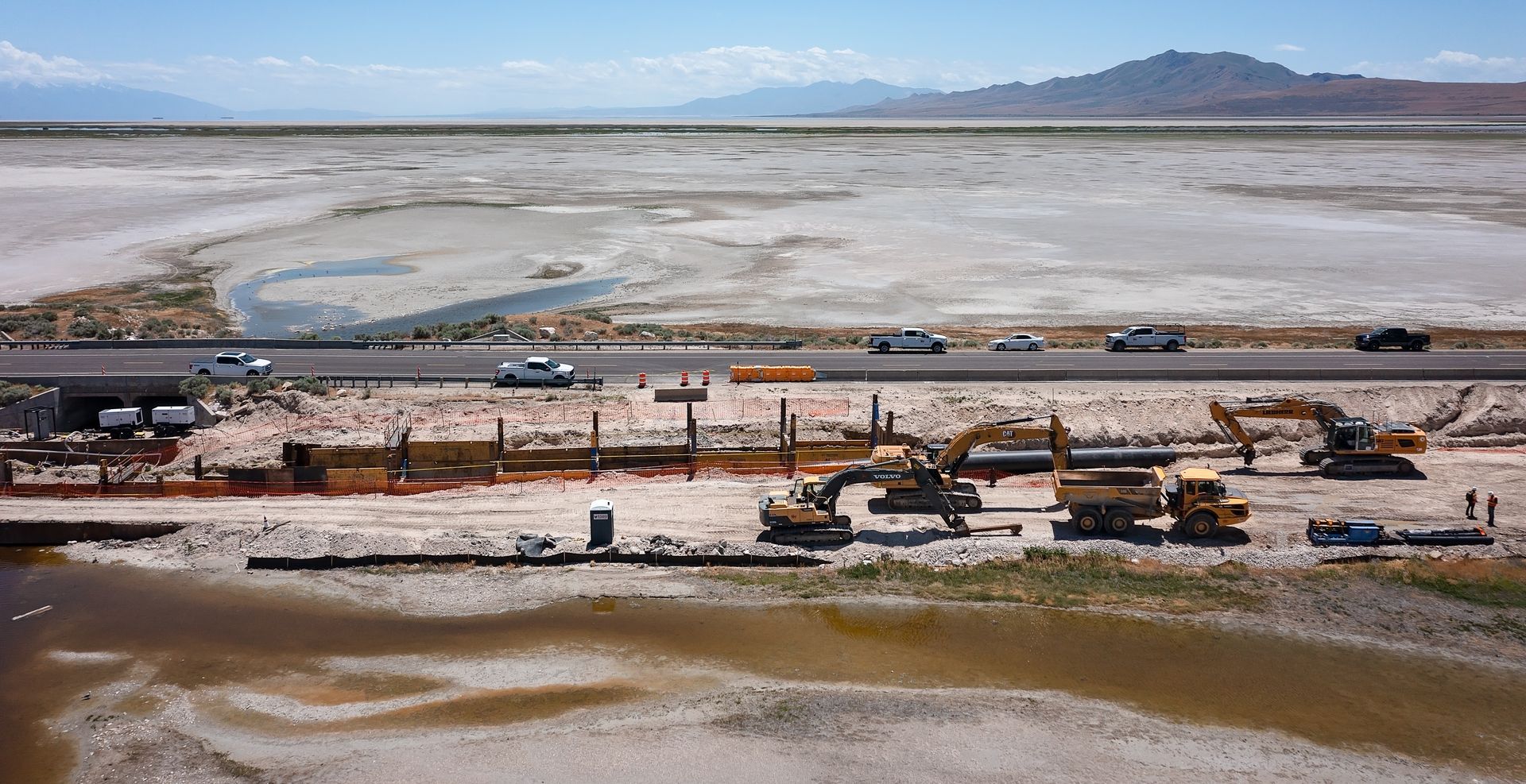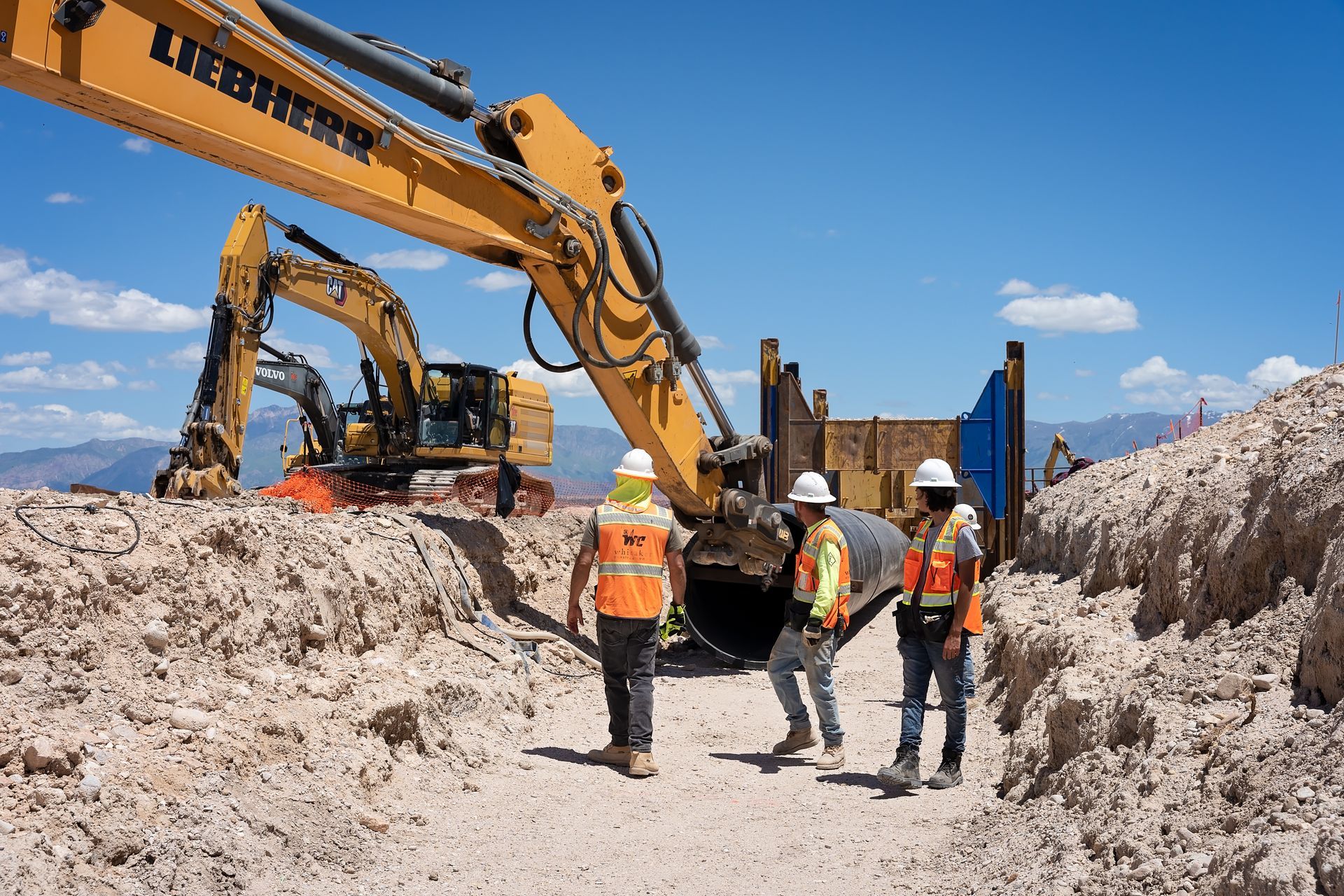The installation of six miles of 63-inch diameter pipe for the North Davis Sewer District offered diverse challenges for Whitaker Construction. By Milt Harrison

Building the largest and longest HDPE effluent pipeline in the state of Utah—six long, arduous miles of 63-inch pipe—does not happen over two-plus years without the project team conquering significant challenges along the way. The end result is improved water quality for Farmington Bay and, optimistically, a trickle-down effect that carries to the whole Great Salt Lake.
For Myron Bachman, General Manager for owner North Davis Sewer District (NDSD), the key to this project was having Whitaker Construction build it to meet the current demands of a steadily growing population while factoring in potential expansions without the need for costly, invasive repairs.
In addition, Bachman said, "Some of the largest challenges were getting all the stakeholders to agree that this is truly the best option for NDSD’s effluent. Second, was getting all required permits and minimizing [impact] on the causeway during heavy-use periods, which Whitaker excelled at.”
Installing massive 63-inch diameter HDPE piping adjacent to a narrow causeway presents dozens of logistical challenges, but a comprehensive management plan stressing efficiency optimization kept things rolling.
“The pipeline provided a realistic approach of thinking outside the box by providing an alternative option to improve Farmington Bay water quality," said Bachman. "[This will] maximize the probability that NDSD’s discharge will continue to the Great Salt Lake, especially in times of reduced lake levels, providing a less costly alternative to ratepayers and still maintain a healthy environment. By keeping NDSD’s effluent in the lake the District is doing all it can do to minimize the effects on the residents created by lower lake levels.”

This sheer size of pipe required the fusing process to take place above grade and then having the welded sections lowered into the channel using myriad individual pieces of heavy equipment for each section “leap frogging” their positions. For the large fusing machines that were used, Whitaker created a sled system to help manage the moving of such large pieces of equipment on infamously unstable ground.
Record snowfall during the 2022-23 winter impacted the softness of the volatile surface, creating mud and a deceivingly spongy surface at times. COVID's impact was significant but met with diligence and a safety-first mentality.
"The conditions and times that we completed the bulk of this project demanded fluid communication and organization from our entire team," said Sage Thorpe, Whitaker Area Manager. "We had to execute efficiently on all deliverables, even during a global pandemic." The transportation of each section of pipe required semi-trucks to safely pick up, load, secure, and then transport them to the jobsite.
"Our entire team’s ability to think outside of the box to create effective solutions are the very reasons that we rose above the challenges and now get to add this impressive project to our already extensive portfolio," added Thorpe.
Additionally, this project had places where the Great Salt Lake crosses under the causeway for public access to Antelope Island. This was combated with an extensive slide-rail shoring system and pumping equipment at siphon locations to keep the water at bay.
Environmental consciousness, always at the top of any project list for Whitaker, took on additional meaning given the rich diversity of the wildlife area that surrounds Antelope Island.
The island is home to 500-700 bison that attract visitors from all over the country, as well as mule deer, bighorn sheep, antelope, and many other desert animals. Millions of birds, various critters, and flying insects also flock to Antelope Island's surrounding shores. Bringing in heavy equipment and other necessary tools had the potential to disrupt some of that environment. The precautions taken by the team ensured a safe, environmentally conscious project throughout.
“This project will forever be a great contributor to the area of Davis County because of taking wastewater that is being generated from the community and treating it into clean water and pushing [it] to the Great Salt Lake," said Kenton Braegger, Project Superintendent for Whitaker. "It's helping put water back into the ecosystem to help our environment."
North Davis Sewer District Final Effluent Pipeline
Location: Syracuse
Cost: $31 Million
Construction Timeline: August 2021 - October 2023
Length: 6 miles
Pipe: 63-inch HDPE
Project Team
Owner: North Davis Sewer District
Lead Design: Jacobs
General Contractor: Whitaker Construction





























